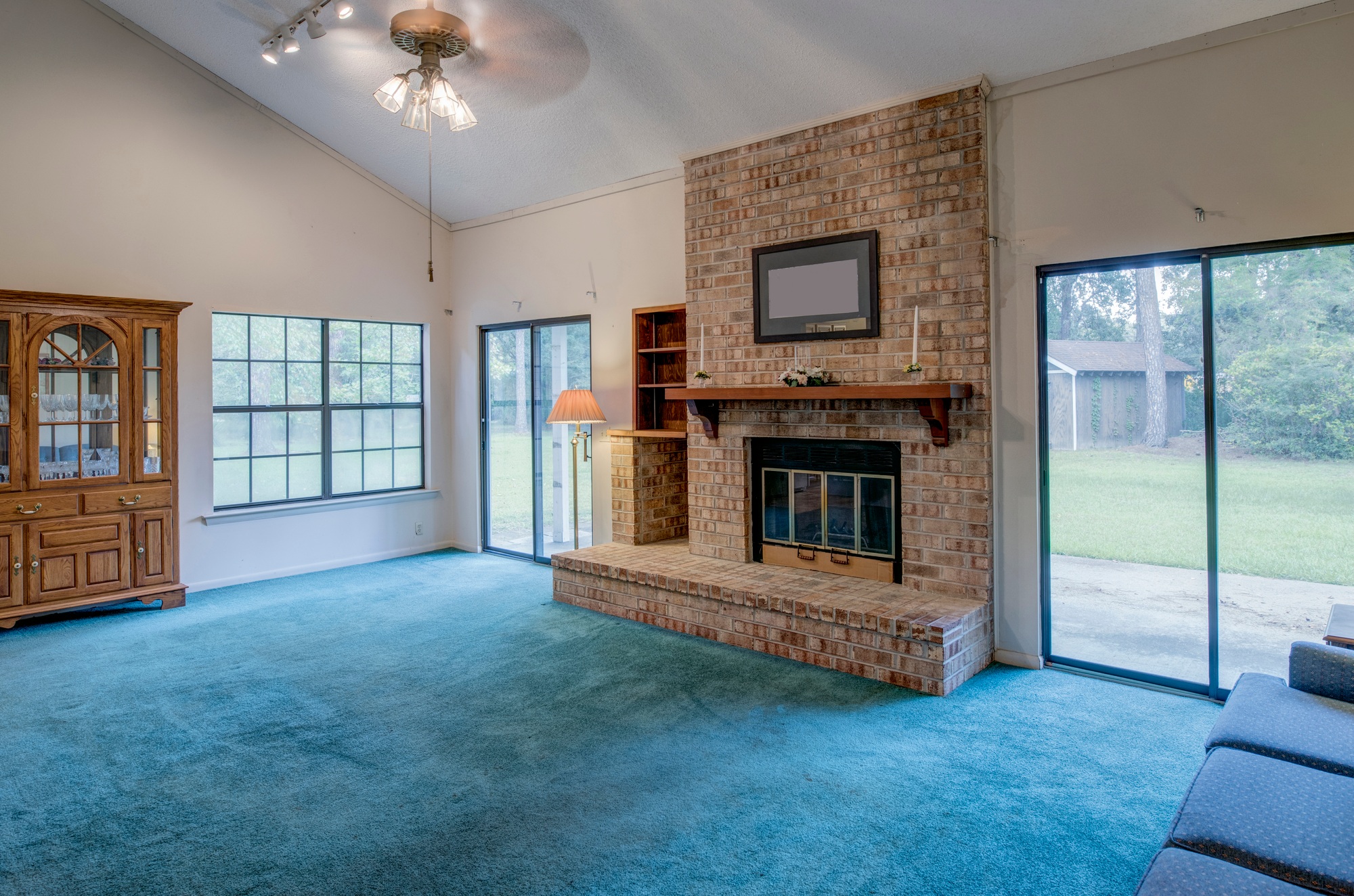Key Takeaways

- A solid house flipping business plan is essential for navigating the complexities of the real estate market and maximizing profits.
- Key components of a successful plan include market analysis, budgeting, property sourcing, renovation strategies, and sales strategies.
- Researching profitable markets and analyzing property value trends enhances decision-making for potential investments.
- Setting clear, SMART goals and estimating costs helps maintain financial discipline throughout the flipping process.
- Explore various funding options such as traditional loans, hard money loans, partnerships, and crowdfunding for capital.
- Effective execution of renovations and strategic marketing are crucial for selling properties quickly and achieving desirable profit margins.
Jumping into the house flipping business can be an exciting venture, but without a solid plan, it can quickly turn into a financial nightmare. Whether you’re a seasoned investor or just starting out, having a clear business plan is crucial for your success. It’ll help you navigate the complexities of the real estate market while maximizing your profits.
A well-crafted house flipping business plan outlines your goals, budget, and strategies for finding and renovating properties. It serves as your roadmap, guiding you through each step of the process, from sourcing deals to selling the finished project. With the right approach, you can transform rundown houses into stunning homes and build a thriving business in the process.
Understanding House Flipping

Understanding the house flipping process is essential for anyone looking to start a business in real estate. It’s a viable opportunity that combines investment savvy with construction skills to generate profits.
What Is House Flipping?
House flipping refers to purchasing properties, renovating them, and selling them at a higher price. You look for undervalued homes with potential for improvement. Successful flippers analyze property values, local markets, and renovation costs before making a purchase. It’s important to recognize that quick sales can yield substantial returns, but they also involve risks.
Key Components of a House Flipping Business Plan
A solid business plan for house flipping includes various key components:
- Market Analysis: Research local real estate trends, property values, and demand in your targeted area.
- Budgeting: Outline all costs, including acquisition, renovation, and closing costs. Ensure you allocate funds for unexpected expenses.
- Property Sourcing: Establish methods for finding properties, such as networking, auctions, or online listings.
- Renovation Strategy: Define the scope of renovations. Determine which updates maximize market value while staying within budget.
- Sales Strategy: Identify strategies for selling the property quickly while achieving a desirable profit margin.
- Timeline: Create a realistic schedule for each phase of the project, from purchase to sale, to track progress effectively.
These components serve as a roadmap, helping you navigate the complexities of the house flipping business while maximizing profits.
Research and Market Analysis

Research and market analysis form the foundation of a successful house flipping business plan. Understanding market dynamics allows you to identify lucrative opportunities and make informed decisions.
Identifying Profitable Markets
Identifying profitable markets is crucial for maximizing your investment returns. Focus on the following factors:
- Demographics: Understand the target customer base in different areas. Pay attention to age, income level, and preferences. For instance, younger buyers may prefer homes with modern amenities.
- Growth Trends: Examine economic indicators such as population growth, job opportunities, and local development. Markets experiencing rapid growth tend to yield better profits.
- Neighborhood Analysis: Research neighborhoods with low vacancy rates and high demand. These areas often provide attractive opportunities for profitable flips.
Analyzing Property Value Trends
Analyzing property value trends enables you to make data-driven decisions. Consider these key points:
- Historical Data: Review historical sales data in your target market. Look for patterns in price appreciation or depreciation to gauge future trends.
- Comparative Market Analysis (CMA): Conduct a CMA to evaluate comparable properties in the area. This analysis helps assess whether a property is priced appropriately.
- Local Regulations: Stay informed about zoning laws and regulations that may impact property values. Changes in local policies can significantly influence your profits.
By focusing on research and market analysis, you position your small business for success in the competitive house flipping industry.
Creating Your Business Plan

Creating a solid business plan is essential for your house flipping business. It serves as a roadmap that outlines your objectives, strategies, and financial projections, helping you successfully navigate the complexities of the real estate market.
Setting Clear Goals
Setting clear goals provides direction for your house flipping business. Establish specific, measurable, achievable, relevant, and time-bound (SMART) objectives. For example, aim to flip three houses within your first year, generating a minimum profit of $30,000 on each property. Clear goals help you track your progress and stay focused, allowing you to adjust strategies as necessary.
Estimating Costs and Budgeting
Estimating costs and budgeting are vital components of your business plan. Document all associated expenses, including acquisition costs, renovation expenses, permits, and marketing fees. Use a detailed budget template to forecast your total investment and expected returns. Understanding your cash flow and project timelines enables you to maintain financial discipline and avoid unexpected expenses. For instance, if you purchase a property for $150,000 and anticipate $50,000 in renovation costs, ensure that your total budget aligns with your profit expectations.
Funding Your House Flipping Project
Securing funding is a crucial step in your house flipping project. Various financing options exist that can help you capitalize on profitable property investments and grow your small business effectively.
Traditional Financing Options
Traditional financing methods offer familiar routes for funding your house flipping ventures.
- Conventional Loans: Conventional mortgages often require a credit score of at least 620 and a down payment ranging from 3% to 20%. Lenders assess your financial history to determine loan eligibility, so ensure your credit is in good standing.
- FHA Loans: The Federal Housing Administration offers loans aimed at those with lower credit scores, generally requiring a minimum down payment of 3.5%. However, properties must meet certain conditions, which may include owner-occupancy rules.
- Home Equity Loans: If you own a home, equity loans let you borrow against its value. You can use these funds for a down payment on new properties or renovation costs. Keep in mind that this option risks your existing home if repayment fails.
Creative Financing Alternatives
Creative financing options provide flexibility to fund your projects without hefty traditional requirements.
- Hard Money Loans: Hard money lenders supply short-term loans backed by the property’s value rather than the borrower’s creditworthiness. This option typically features higher interest rates and fees but is faster to access, allowing you to act quickly on advantageous deals.
- Partnerships: Collaborating with other investors can spread costs and increase purchasing power. Partnerships allow you to leverage collective resources while sharing risks and profits. Clearly define roles and profit distributions in your agreements.
- Seller Financing: In seller financing arrangements, the property owner offers you a loan to purchase their property. This setup can simplify negotiations, often resulting in lower closing costs, but it’s essential to establish clear terms to prevent misunderstandings down the line.
- Crowdfunding: Online platforms allow you to raise funds from multiple small investors. This method helps build a community around your project, but it often requires extensive marketing efforts to attract potential backers.
By exploring these funding avenues, you can gain the necessary capital for your house flipping project and invest in growing your small business effectively.
Executing the Flip
Executing a house flipping project requires an organized approach to ensure timely completion and profitability. Follow these steps to enhance your renovation and selling processes.
Renovation Tips and Best Practices
- Develop a detailed renovation plan. Outline each task necessary for transforming the property, including demolition, repairs, and aesthetic updates. Prioritize high-impact areas like kitchens and bathrooms.
- Set a realistic budget. Gather multiple quotes from contractors and factor in contingencies for unexpected expenses. Aim to add 20% to your estimated costs for added security against overruns.
- Schedule regular site visits. Frequent check-ins help you monitor progress and resolve issues promptly. Foster good communication with contractors to maintain efficiency and ensure quality work.
- Utilize project management software. Track your budget, timeline, and contractor schedules to stay organized. This tool can simplify complicated aspects, making project adjustments easier.
Selling the Property
- Prepare a strategic sales plan. Determine your target market by analyzing local demographics and trends. Focus on marketing features that attract buyers most effectively.
- Price competitively. Conduct comparative market analysis (CMA) to set an attractive price. Ensure your asking price reflects upgrades made during renovations while considering current market conditions.
- Enhance curb appeal. Invest in landscaping, exterior painting, and minor repairs that improve first impressions. A well-presented home often attracts more interest and leads to quicker sales.
- Promote effectively. Leverage online listings and social media to reach potential buyers. High-quality photos showcasing the transformed property can significantly impact viewer interest.
By following these practices, you position your small business for success in the competitive house flipping market.
Conclusion
Starting a house flipping business can be a rewarding venture when you have a solid plan in place. By clearly defining your goals and strategies you can navigate the complexities of the real estate market with confidence. Remember that thorough research and market analysis are essential to identify profitable opportunities and avoid costly mistakes.
Securing the right funding and managing your renovation projects efficiently will further enhance your chances of success. With a well-structured business plan you’re not just flipping houses; you’re building a sustainable business that can lead to significant profits. Embrace the journey and stay committed to your vision, and you’ll see your efforts pay off as you transform properties and create beautiful homes.
Frequently Asked Questions
What is house flipping?
House flipping refers to the process of buying undervalued properties, renovating them, and then reselling for a profit. This strategy requires market knowledge, property analysis, and effective renovation to maximize returns.
Why is a business plan important for house flipping?
A solid business plan outlines goals, budget, and strategies essential for navigating the complexities of the real estate market. It serves as a roadmap, helping both beginners and seasoned investors maximize profits and achieve success.
What key components should be included in a business plan for house flipping?
Key components include market analysis, budgeting, property sourcing, renovation strategy, sales strategy, and timeline. These elements collectively guide flippers in making informed decisions and optimizing their processes.
How do I research profitable markets for house flipping?
To identify profitable markets, analyze demographics, growth trends, and neighborhood dynamics. Understanding local property value trends and historical data helps in making informed investment decisions.
What financing options are available for house flipping?
Options include traditional financing like FHA loans and home equity loans, as well as creative alternatives such as hard money loans, partnerships, seller financing, and crowdfunding. Each has its own requirements and potential risks.
What are some renovation tips for successful house flipping?
Develop a detailed renovation plan, set a realistic budget with contingencies, schedule regular site visits for progress updates, and use project management software. These strategies help ensure timely and profitable renovations.
How should I market a flipped house for sale?
Create a strategic sales plan that includes competitive pricing based on Comparative Market Analysis (CMA), enhancing curb appeal, and promoting through online listings and social media to attract potential buyers.
Image Via Envato



